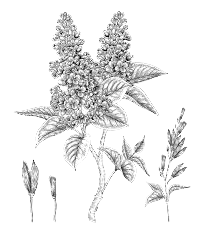‘Lilac Sunday’ Rouen Lilac
- Scientific Name
- Syringa × chinensis ‘Lilac Sunday’
The Arnold Arboretum introduced a lilac called ‘Lilac Sunday’ in 1997. This garden favorite can produce clusters of flowers that are more than two feet long.


There are 408 lilac plants representing 171 taxa (kinds) in the Arboretum’s collection. These include 133 cultivars that have been selected for certain horticultural merits such as flower size and color. The remaining kinds represent various botanical taxa, the parents of many of today’s hybrids. Together they provide a season of color and scent that extends over five weeks each spring. The Arnold Arboretum has celebrated lilacs and the arrival of spring with an annual celebration, Lilac Sunday, since 1908.
Resources:



The Arnold Arboretum introduced a lilac called ‘Lilac Sunday’ in 1997. This garden favorite can produce clusters of flowers that are more than two feet long.
An alumna of Arnold Arboretum propagator Jack Alexander’s lilac breeding program, this sterile hybrid was introduced in 2005. Its abundant, pale purple flowers kiss the sky early in the lilac blooming season.
| Plant ID | Accession Date | Received As | Origin | Source |
|---|---|---|---|---|
This quarter-mile tour through the Explorers Garden features stories from the Arboretum’s century and a half of collecting plants around the world. If you’re at the Arboretum, click here to take a version of this tour with Expeditions, our mobile web app.



